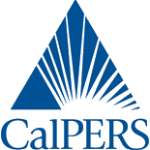Issue 1.7
Question for you: Is your firm selling to Adidas AG, Becton Dickinson, Herman Miller, HP Inc, Johnson & Johnson, Levi Strauss, Wal-Mart Stores … and other firms that are charting their chemical footprint? These companies are quantitatively measuring their own chemical footprint to develop information on such things as metric tons of Chemicals of High Concerns — “CoHCs” used by the companies and their suppliers (and targeted for reduction over time).
 The Chemical Footprint Project (CFP) is a tool to help signatory enterprises target areas of operations and production (and examine sourcing) to aid in the effort to reduce their use of CoHC.
The Chemical Footprint Project (CFP) is a tool to help signatory enterprises target areas of operations and production (and examine sourcing) to aid in the effort to reduce their use of CoHC.
Over the past two years of the project (2015/2016), corporate signatories have quantified their footprint and reduced use of chemicals of “high concern” by some 416 million pounds.
This is an effort led by the aptly-named Chemical Footprint Project (.org), in collaboration with investors, public sector agencies, NGOs, and health care organizations.
- The companies involved generate annual revenues of US$670 billion.
- The CFP investor signatories involved in the annual effort represent US$2.3 trillion in Assets Under Management.
The aim of participating organizations is to help major customers (such as those listed above) position themselves on a global basis to “capture new markets with safer products.”
The targeted products include: apparel and footwear; building products and furnishings; packaging; medical devices; household and personal care products.
Wal-Mart Stores was the first major retailer to sign on. Says Zach Freeze, the company’s senior director of sustainability: “CFP is making data available for benchmarking and analysis, which are critical for us to understand where our company and our suppliers are on the journey to more sustainable chemicals.”
Wal-Mart has more than 60,000 total suppliers, according to some accounts.
 In the second year of the project, the results of the measuring and assessment of where companies are in the “journey to more sustainable chemicals” revealed:
In the second year of the project, the results of the measuring and assessment of where companies are in the “journey to more sustainable chemicals” revealed:
- Those firms selling liquid-type products (think about household cleaning and personal care products), larger firms scored higher in 2016 for metrics that require policies, systems, and procedures for using safer chemicals; small companies scored higher for their footprinting and transparency.
- Companies selling hard goods — clothing, furniture, electronics included — scored higher across all indices; medium-sized companies were next in line; and then smaller enterprises.
The Chemical Footprint Project has these steps for all players in moving to “environmentally-sound chemicals management:”
CFP SURVEY STRUCTURE & SCORING
The Survey includes 20 questions that are scored on a scale of 0- to- 100, with 100 representing best performance. This is divided into four main elements:
- Management Strategy
Measures the scope of corporate chemical policies and their integration into business strategy, accountability and incentives for safer chemical use, as well as support of initiatives and public policies for safer chemicals. - Chemical Inventory
Measures a company’s level of knowledge about the chemicals in its products, components, and manufacturing processes; and its systems for managing chemical data and ensuring supplier compliance with its reporting requirements. - Footprint Measurement
Measures whether a company sets goals to reduce chemicals of high concern, whether the firm has established a baseline corporate chemical footprint and measured progress in reducing chemicals of high concern, and whether safer alternatives are assessed, identified and used. - Public Disclosure & Verification
Measures whether a company publicly releases information on the chemicals in its products and used in its manufacturing, whether it discloses its answers to the Survey questions and score, and whether its answers have been independently verified by a third party.
STEPS TO LEARN MORE AND GET STARTED
You can educate yourself about the Survey by downloading the survey guidance and list of CoHC’s:
https://www.chemicalfootprint.org/assess/cfp-tool-guidance-document-request.
The user base for the CFP output includes major customers that your company may be doing business with; and, investors holding your issues or thinking about your stocks and bonds (“buy-sell-hold” based on ESG performance — many more mainstream investors are doing that!).
The founding organizations of the CFP include: Clean Production Action; the Lowell Center for Sustainable Production, at the University of Massachusetts-Lowell; and Pure Strategies.
- There’s more information at: https://www.chemicalfootprint.org
- And a blog for you to follow: https://www.chemicalfootprint.org/news/category/blog
NOTES FROM G&A INSTITUTE
Our clients over the years have included most of the large-cap, mid-cap and some small-cap chemical manufacturers, and multinationals as well. We are experts in the chemicals industry and can assist you in participation in the CFP, as well as help you analyze the potential impact of this Project going forward — in customer relations, investor relations, industry relations, third party queries, and more.
If you are interesting in learning more about the work of Governance & Accountability Institute and its portfolio of resources, tools and service offerings, please click here





